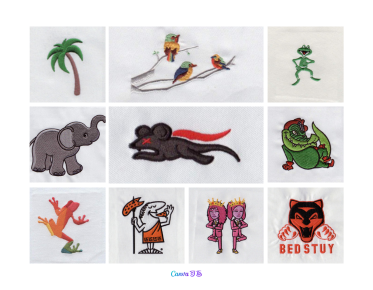How to Maintain Embroidery Machines to Extend Their Lifespan
Embroidery machines are a significant investment for any business or hobbyist involved in textile arts. Proper maintenance is crucial to ensure these machines operate efficiently and have a long lifespan. In this comprehensive guide, we will explore various maintenance practices that can help you keep your embroidery machine in top condition.
Regular Cleaning and Lubrication
One of the most fundamental aspects of maintaining an embroidery machine is regular cleaning and lubrication. Dust, lint, and thread residues can accumulate in the machine, leading to performance issues. It is essential to clean the machine after every use, focusing on the bobbin area, needle plate, and thread path. Use a soft brush or compressed air to remove debris.
Lubrication is equally important to keep the machine running smoothly. Refer to the manufacturer's manual for specific instructions on where and how often to apply oil. Typically, moving parts such as the needle bar and hook race require regular lubrication.
Needle and Thread Management
Using the correct needle and thread for your embroidery projects is vital. Ensure that the needle is appropriate for the fabric and thread type. A worn or bent needle can cause skipped stitches and damage the fabric. Regularly replace needles to maintain stitch quality.
Thread tension should be adjusted according to the fabric and design. Incorrect tension can lead to thread breakage or puckering. Always test the tension on a scrap piece of fabric before starting a new project.
Software and Design Considerations
Embroidery digitizing plays a crucial role in the quality of the final product. Poorly digitized designs can cause thread breaks and machine jams. It's essential to use high-quality embroidery digitizing services to ensure that your designs are optimized for your machine.
Companies like Eagle Digitizing offer professional digitizing services that convert artwork into stitch files compatible with embroidery machines. Their expertise in minimizing thread breakage and ensuring smooth sew-outs can significantly enhance your machine's performance.
Routine Inspections and Professional Servicing
Conducting routine inspections of your embroidery machine can help identify potential issues before they become major problems. Check for loose screws, worn belts, and other signs of wear and tear. Addressing these issues promptly can prevent costly repairs.
Additionally, schedule regular professional servicing for your machine. A qualified technician can perform a thorough inspection, cleaning, and adjustment of the machine, ensuring it operates at peak efficiency.
Environmental Factors
The environment in which your embroidery machine operates can also impact its lifespan. Keep the machine in a clean, dry, and temperature-controlled area. Avoid exposing it to extreme temperatures or humidity, as these conditions can affect the machine's components.
Proper storage is also crucial when the machine is not in use. Cover the machine to protect it from dust and debris, and ensure it is unplugged to prevent electrical issues.
Training and Skill Development
Investing in training and skill development for yourself or your staff can lead to better machine maintenance and operation. Understanding the intricacies of embroidery digitization and machine functions can help you troubleshoot minor issues and optimize machine settings for different projects.
Many embroidery digitizing companies offer resources and support to help users improve their skills. Taking advantage of these opportunities can enhance your ability to maintain and operate your machine effectively.
Future Trends in Embroidery Machine Maintenance
As technology advances, embroidery machines are becoming more sophisticated, with features like automatic threading and built-in design editing. These advancements can simplify maintenance tasks and improve machine performance. However, they also require users to stay updated with the latest technology and maintenance practices.
Looking ahead, the integration of smart technology and IoT in embroidery machines could revolutionize maintenance practices. Machines could potentially diagnose issues and alert users to necessary maintenance tasks, further extending their lifespan.
By implementing these maintenance practices and staying informed about industry advancements, you can ensure that your embroidery machine remains a valuable asset for years to come.



